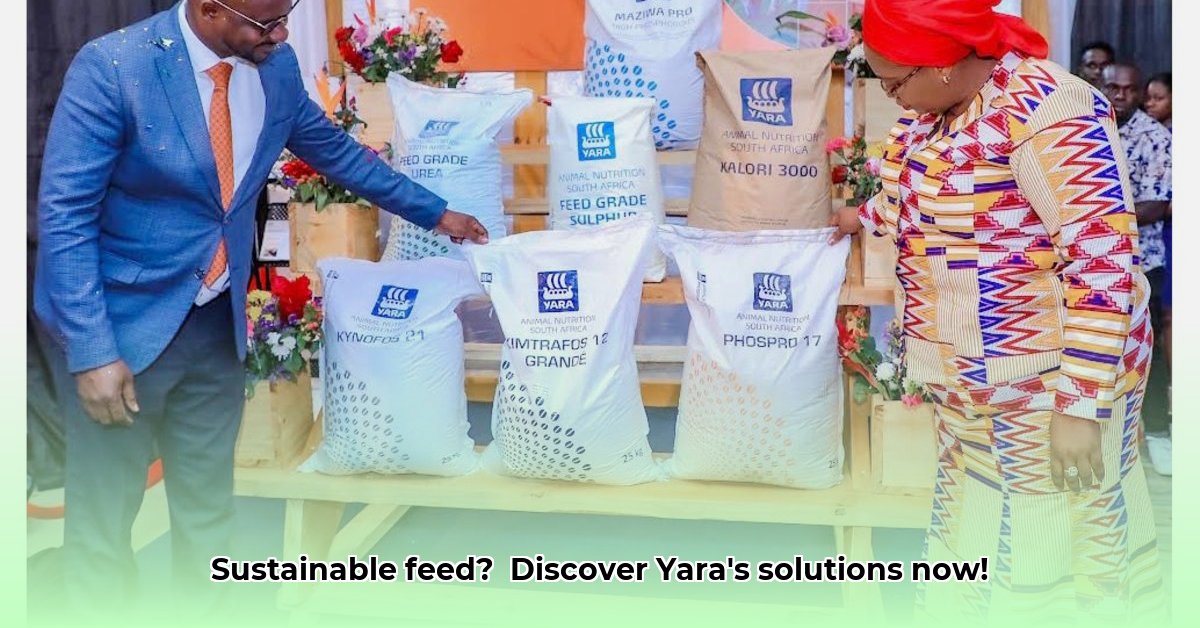
Yara Animal Nutrition, a global giant in animal feed, operates across the entire value chain – from phosphate rock extraction to farm delivery. This integrated approach typically ensures high-quality products and timely distribution. But how sustainably is this behemoth operating? While certifications like HACCP, ISO 14001, GMP+, and FAMI-QS attest to their commitment to safety and quality, a deeper dive into their environmental performance reveals a more nuanced picture. The question remains: is Yara truly walking the talk when it comes to sustainability?
Environmental Impact: Beyond the Certifications
Yara's animal feeds incorporate phosphates (Bolifor®, Kynofos®) and urea (Rumisan®), essential nutrients but with potentially harmful side effects. Phosphate runoff contributes to eutrophication (harmful algal blooms), while both phosphates and urea release greenhouse gases. Crucially, Yara needs to move beyond certifications and present robust, independently verified data on its carbon footprint, water usage, and waste management. Transparency is key to building public trust. How much phosphate-related water pollution, for example, is directly attributable to Yara's operations? This level of detail is essential.
Global Growth, Responsible Practices?
Yara's expansion into new markets, such as Latin America and Southeast Asia, presents significant opportunities but also unique environmental and regulatory challenges. Adapting sustainable practices to diverse regional contexts requires more than simply maximising profits; it demands a proactive and responsible approach. Does Yara possess the necessary resources and expertise to navigate these complexities and ensure responsible practices across its ever-expanding global footprint? This is a critical question that requires careful analysis.
Navigating the Sustainability Tightrope: Innovation and Regulation
With governments worldwide tightening regulations on phosphate and nitrogen use—a necessary measure—Yara must invest substantially in research and development to create and implement genuinely sustainable solutions. This isn't solely an environmental imperative; it is a strategic business decision, essential for long-term survival and competitiveness. How effectively is Yara responding to this challenge, and what innovative solutions are they deploying? Concrete examples are needed.
Transparency: The Foundation of Trust
To foster trust and accountability, Yara must publish detailed, publicly accessible sustainability reports, independently verified and packed with quantifiable data. This isn't about self-promotion; it's about demonstrating a firm commitment to responsible practice. Setting clear, measurable goals, and regularly updating stakeholders on progress is crucial. Open communication with farmers, consumers, and NGOs is paramount in building a shared understanding and fostering collaborations. What concrete steps is Yara taking to improve transparency and engage with its stakeholders?
Collaboration: A Shared Responsibility
The transition to sustainable livestock farming demands a collective effort. Yara, feed producers, farmers, governments, and consumers all have a role to play. Governments can incentivize sustainable practices while consumers can drive demand for environmentally responsible feeds. The challenge lies in forging a shared commitment to transparency and accountability. What collaborative initiatives is Yara involved in to promote sustainable practices across the agricultural value chain?
Understanding the Risks and Mitigating Them
Yara faces various risks in its operations. However, proactive mitigation strategies can significantly reduce the negative environmental impacts. How is Yara actively addressing these challenges?
| Risk Factor | Mitigation Strategy |
|---|---|
| Phosphate-based feeds (water pollution) | Explore sustainable phosphate sources, optimize usage, invest in recycling and wastewater treatment. |
| Urea-based feeds (greenhouse gas emissions) | Develop alternative nitrogen sources, improve nitrogen use efficiency, and explore carbon capture technologies. |
| Supply chain disruptions (geopolitical risks, climate change) | Diversify sourcing, strengthen supplier relationships, and implement climate-resilient strategie. |
| Lack of transparency | Publish detailed & independently verified sustainability reports, engaging with stakeholders. |
This journey toward sustainable agriculture is complex and ongoing. Research is critical. However, the essential ingredients for success remain: transparency, collaboration, and a shared commitment to a sustainable future. Yara’s success hinges on its ability to fully embrace these principles.